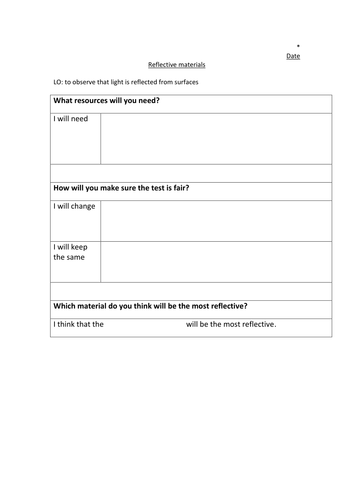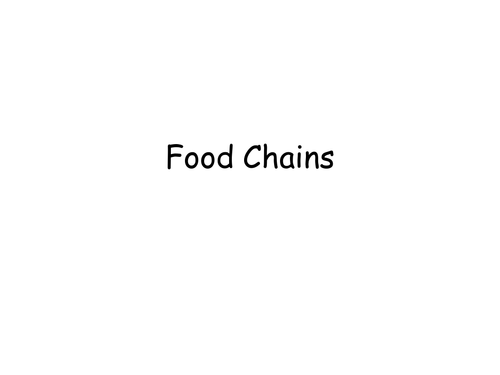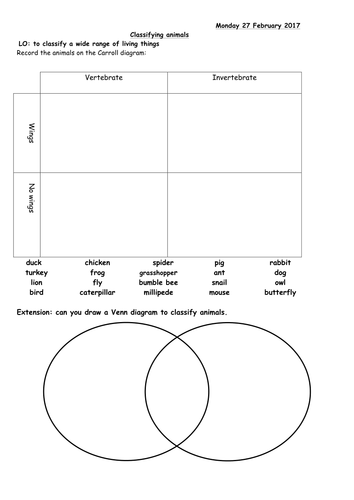64Uploads
47k+Views
8k+Downloads
Primary science

Outstanding lesson - Investigating Reflective Materials - Light and Shadows - Year 3
A complete lesson including planning, powerpoint, and differentiated worksheets to scaffold planning and follow up to an investigation to meet the national curriculum objective to observe that light is reflected from surfaces.
Children are able to plan an investigation to help and owl find the most reflective material.
The worksheets are differentiated to ensure support and challenge.

Y3/ Y4 Food chain lesson (Habitats Unit) differentiated worksheet & PPT
These resources can be used to introduce habitats to a Y3 / Y4 class. The lesson allows opportunity to consolidate terms such as predator, prey, consumer and for children to design their own food chain. A task for early finishers, called the Food Chain Game, is also included. The children can sort the cards into different food chains. This allows for a talking point and leads into foodwebs, as many of the primary consumers could be prey to multiple secondary consumers.
The worksheet is differentiated to scaffold and support learners.

Outstanding Sorting / Classifying Animals lesson perfect for Y3/Y4 Habitats topic
This file includes:
A PPT presentation introducing venn and carroll diagrams
A collection of animal images to physically sort - great as a starter, or as an activity for LA students.
4 differentiated worksheets, allowing children to classify and sort different animals. Activity is scaffolded with suggestions of animals, moving towards blank diagrams to allow children to develop their own questions.
04.03.17 The file has been updated to include a powerpoint which now works.

Rocks and Soils Lesson Plan Year 3 9 Lessons
Rocks and Soils Year 3 Lesson Plans covering the following objectives:
To compare and group different kinds of rocks according to their properties.
To describe in simple terms how fossils are formed when things that have lived are trapped within rock.
To recognise that soils are made from rocks and organic matter.
To carry out tests on rocks to find out their properties.
To describe how igneous, sedimentary and metamorphic rocks are made in the rock-cycle.
To describe how big rocks are broken down into the smaller rocks found in soil (weathering).
To investigate why some soils drain better than others.
The lessons include two practical investigations ('Which rock would make the best roof tile?' and Which soil is the most permeable?')

Forces and Magnets 10 Lesson Scheme of Work Year 3 or Year 4 with all resources
A plan and resources for 10 lessons, including practical investigations into friction and magnets.
Learning objectives covered:
To introduce forces and find out what children already know about forces
To observe that some forces need contact between two objects
To recognise a force as a push or a pull.
To use arrows to show the direction of a force
To identify gravity as the force that pulls objects towards Earth.
To investigate forces
To describe magnets as having two poles.
To predict whether two magnets will attract or repel each other, depending on which poles are facing.
To explore the use of magnets (and compasses)
To recognise that all magnetic objects are made of metal but that not all metals are magnetic.
To plan and carry out tests to find out the strength of different magnets.
To observe that some forces need contact between two objects, but magnetic forces can act at a distance.
To observe how magnets attract or repel each other and attract some materials but not others.





